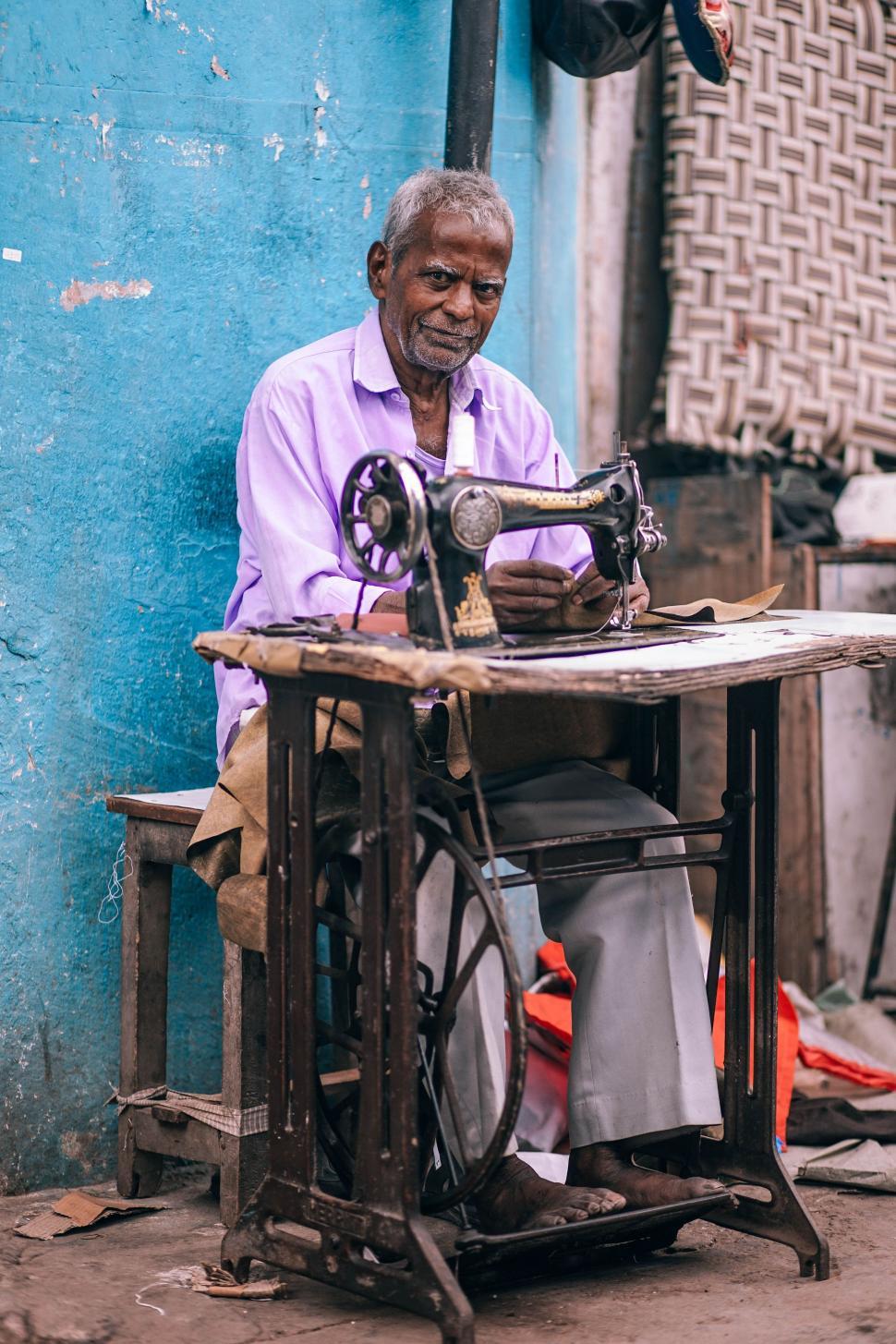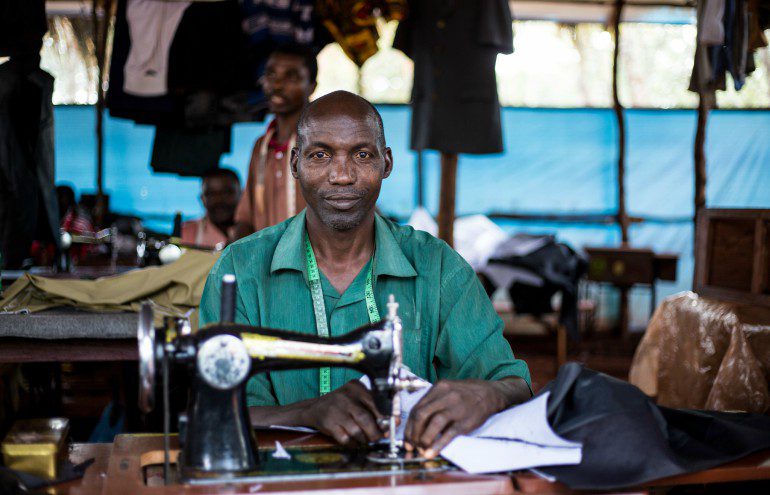Comprehending the Tailoring Process: From Fabric Selection to Final Suitable for the Perfect Wardrobe
The customizing process is a complicated interaction of art and scientific research, beginning with the essential decision of textile selection and finishing in the accurate changes of last installations. Each fabric kind brings special qualities that affect not just the aesthetic appeal yet likewise the garment's durability and viability for different occasions. Understanding the subtleties of customizing methods can raise one's wardrobe to unprecedented degrees of class. As we discover these components further, one must consider just how even the smallest details can substantially impact the total result of one's individual style.
Relevance of Fabric Choice
Choosing the right textile is important in the customizing process, as it directly influences the convenience, longevity, and overall aesthetic of the last garment (tailor perth). The option of fabric establishes the structure for the garment's efficiency, design, and performance. Different materials have one-of-a-kind residential properties, such as weight, stretch, and breathability, which can significantly impact just how the garment drapes and fits the body
In addition, textile selection influences the garment's long life and ease of care. High-grade materials can stand up to wear and tear, maintaining their appearance and structure with time, while lower-quality materials may result in pilling or fading. Additionally, the ideal fabric contributes to the garment's capacity to transition throughout seasons and celebrations, thereby improving flexibility.
A tailored item made from a proper textile not only showcases workmanship yet likewise elevates the wearer's self-confidence. Understanding the nuances of material choice is vital for any customizing venture. It guarantees that the end product not just meets the visual desires of the client but likewise aligns with practical demands, thereby attaining a harmonious equilibrium between kind and feature in the tailored closet.
Sorts Of Fabrics and Their Uses
Understanding the different kinds of textiles offered is essential for making informed choices throughout the customizing procedure. Each fabric possesses special features that dictate its suitability for specific garments and occasions.
Its convenience enables it to be tailored into everything from shirts to outfits. Its natural flexibility aids garments preserve shape over time.
Silk emanates deluxe and is lightweight, making it best for eveningwear and fragile blouses; nevertheless, it needs careful handling because of its frailty. Linen, with its distinctive coating, is a preferred choice for cozy environments, giving a crisp and ventilated feeling, however it wrinkles quickly, which might affect the garment's appearance.
Synthetic materials, such as polyester and nylon, offer durability and resistance to wrinkles, making them ideal for day-to-day wear and energetic garments. Comprehending these fabric kinds and their homes permits for better decision-making, guaranteeing that each tailored piece not only fits well but additionally lines up with the designated function and celebration.
The Tailoring Methods Discussed
The art of tailoring counts on a selection of strategies that change textile into well-fitted garments. Central to this procedure is pattern composing, where a dressmaker develops templates based on the customer's dimensions and wanted style. This preliminary action ensures that the garment will certainly fit the user properly prior to any cutting takes place.
When patterns are established, cutting strategies come into play. Accuracy is critical as errors can bring about misfitting garments. Tailors typically make use of numerous reducing methods, such as useful reference single-layer cutting for elaborate designs and multiple-layer reducing for efficiency on typical patterns.
Basting is one more important method, enabling dressmakers to briefly sew textile assemble for a preliminary installation. This technique provides the chance to evaluate the drape and total silhouette before last stitching.
Seaming methods, including french joints and flat-felled joints, improve the garment's sturdiness and visual appeal. Tailors additionally use methods such as interfacing and extra padding to give framework and shape to certain locations, like shoulders and collars.
Lastly, ending up techniques, including hemming and side completing, make sure the garment's longevity while giving a refined look. Together, these techniques develop the foundation of effective tailoring, causing beautiful, tailor-made garments.
Fitting Changes and Considerations

Secret considerations include the shoulder fit, which should neither droop neither restrict movement, and the sleeve size, which ought to enable for comfortable arm motion while keeping a refined look. Additionally, adjustments at the midsection can refine the silhouette, try this out with alternatives to let out or absorb fabric as required.
The rise of pants is one more vital factor; it needs to sit pleasantly above the hips without causing pain, permitting simplicity of activity. Hemming lengths for both trousers and skirts ought to mirror the user's recommended design while valuing percentages.

Keeping Your Tailored Clothes
Correct maintenance of customized garments is vital to preserving their fit and appearance gradually. To make sure long life, routine cleaning is paramount. Always follow the care tag directions, which might advise completely dry cleansing for delicate materials or maker washing for more durable products. Prevent regular laundering, as this can use see this site down the fabric and modify the garment's shape.
Storage is equally crucial; usage padded wall mounts for layers and coats to preserve shoulder framework, and shop trousers folded up nicely or hung to stop creasing. Safeguard garments from direct sunlight, which can fade shades and damage fibers.
In addition, routine inspections for small repair services can protect against larger issues. Check for loose switches, tearing joints, or indications of moth damage, dealing with these issues promptly to maintain the garment's honesty.
Finally, think about seasonal turning. Using customized items in small amounts allows materials to recoup, expanding their lifespan. By implementing these upkeep strategies, you can make certain that your customized garments continue to be as pristine as the day you first wore them, improving your excellent wardrobe for many years to find.
Conclusion
The tailoring procedure, encompassing material option, knowledgeable strategies, and precise suitable modifications, plays a vital duty in producing garments that boost both convenience and design. Each phase contributes to the total performance of the end product, ensuring that clothing not just fits well however additionally mirrors specific identification. Comprehending the significance of maintenance expands the life of customized garments, solidifying their worth in a well-curated wardrobe. A detailed strategy to tailoring finishes in a confident and refined look.
Picking the best material is critical in the tailoring process, as it directly affects the convenience, toughness, and total aesthetic of the last garment. The selection of textile establishes the foundation for the garment's design, efficiency, and functionality. Various fabrics have one-of-a-kind residential properties, such as weight, stretch, and breathability, which can considerably affect just how the garment drapes and fits the body.
The art of tailoring depends on a variety of techniques that change material right into well-fitted garments.The customizing process, encompassing fabric selection, experienced strategies, and specific fitting modifications, plays a vital duty in creating garments that enhance both comfort and style.